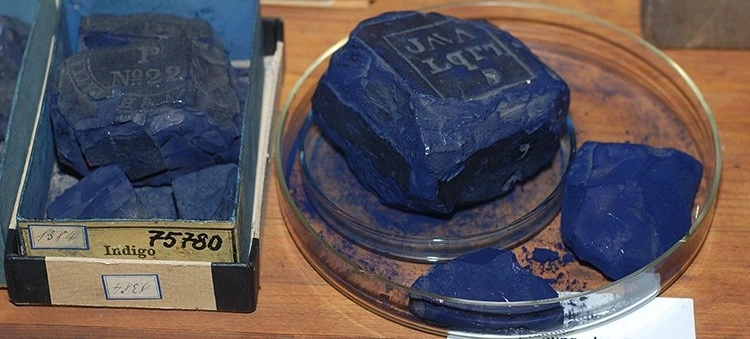The Magic and Danger of Colors
Since the dawn of art, pigments have been powerful tools for artists. They not only color masterpieces but also carry deep meanings, mysterious histories, and, in many cases, mortal risks. Throughout the centuries, certain colors became so coveted and, at the same time, dangerous, that their use was often surrounded by superstition or outright prohibition.
These pigments were known for their fascinating qualities, but also for their toxic effects, difficult processes of acquisition, and stories that made them almost mythical. Whether you are an art lover or simply curious about the mysteries of colors, you are about to embark on a colorful and often dark journey through the history of cursed and forbidden pigments.
The Charm and Danger of Paris Green
In the 19th century, Paris Green, also known as Scheele’s Green or arsenic green, was one of the most sought-after colors by artists and decorators. Its vivid intensity and rich tone made it popular in paintings, wallpaper, and fabrics. However, what seemed like a vibrant and enchanting color concealed a deadly secret.
The pigment was made from arsenic, a powerful poison. Over the years, artists using Paris Green began suffering from arsenic poisoning, showing symptoms like vomiting, diarrhea, and, in the most severe cases, death. The most famous case was that of French painter Édouard Manet, who used the pigment in several of his works. The color was so deadly that, over time, it was gradually removed from the market, but not before causing numerous casualties.
The overexposure to Paris Green also led to the destruction of many paintings from the era, which, over the years, became irreparable due to the toxic effects of the pigment. The danger lay not only in direct contact but also in the mere presence of the pigment in the air and dust. The deaths of several people who came into contact with the pigment eventually led to Paris Green being banned and replaced by safer alternatives.
Prussian Blue: The Secret of Royal Color
Unlike Paris Green, Prussian Blue has a brighter history, though equally marked by secrets and mysteries. Created accidentally by mixing iron with cyanide, Prussian Blue became one of the first synthetic colors widely used by artists from the 18th century. Its popularity was immediate, and painters such as J.M.W. Turner used it in their stunning landscapes.
However, the color was extremely difficult to produce stably, and manufacturers often couldn’t guarantee that the color would remain vibrant over time. The pigment was also toxic: the cyanide in its composition posed poisoning risks. Despite its use by renowned artists, the dangers associated with Prussian Blue, particularly in its production, made it a feared color for many.
Over time, Prussian Blue was overtaken by other, safer paints, but its contribution to art history is undeniable. Today, it is considered one of the most important and valuable pigments of all time, but the risks involved in its production and handling should not be forgotten.
Cinnabar Red: The Color of Blood and Poison
Cinnabar Red, also known as mercury red, is one of the oldest pigments known to humanity. Made from the mineral cinnabar, which contains mercury, this pigment was used since ancient times in both paintings and ceremonial objects. The Egyptians, Romans, and Chinese were known to use cinnabar red in their artistic works and temple decorations.
The problem with cinnabar red is that mercury is extremely toxic. Prolonged exposure to mercury can cause brain damage, seizures, and even death. Despite this, cinnabar red continued to be used for centuries because of its vibrant color and durability. Artists and workers who dealt with mercury-based pigment production were frequently exposed to fatal doses of the substance.
Although cinnabar red was replaced by safer alternatives like modern vermilion, its impact on ancient art and the history of pigments remains significant. This pigment symbolized power, wealth, and at the same time, imminent danger.
Cadmium Yellow: Brilliant But Deadly
Cadmium Yellow is another famous pigment known for its intensity and durability. Created in the 19th century, it quickly became a favorite among artists due to its brilliant color and lasting effect. However, cadmium, the main component of the pigment, is a highly toxic heavy metal.
For a long time, cadmium yellow was used in paintings, especially in the works of modernist artists. However, over the years, scholars and art professionals began to warn about the dangers of prolonged exposure to cadmium, which can cause serious kidney, bone, and respiratory system damage.
Fortunately, with the advent of safer alternatives, the use of cadmium yellow has decreased. Still, it remains a classic example of how the pursuit of aesthetic perfection can have dangerous consequences for human health.

The Legend of Egyptian Blue: The Color of Gods
Egyptian Blue is one of the oldest pigments in the world, created by the ancient Egyptians more than 5,000 years ago. Made from copper silicate and calcium, this brilliant pigment was used in murals and ceramics, being considered the color of gods and royalty.
While Egyptian Blue was admired for its beauty, it was difficult to produce and very expensive, making it accessible only to the wealthiest and most powerful. The production of this pigment was also shrouded in mystery, with manufacturing techniques carefully guarded. This pigment has often been associated with rituals and religious symbols, as well as power and wealth.
Although Egyptian Blue wasn’t considered toxic like some of the other pigments on this list, its rarity and value made it virtually forbidden for the majority of the population. Its history shows us how pigments, beyond their artistic application, can be symbols of power, wealth, and even mysticism.
The Fascination and Danger of Cursed Colors
Cursed and forbidden pigments represent a fascinating intersection between art, science, and history. They remind us that behind every vibrant and attractive color, there is often a story of experimentation, mystery, and even danger. The quest for perfect pigments led artists and scientists down winding paths, some of which resulted in tragedies and discoveries.
While some colors, such as Paris Green and cinnabar red, were abandoned due to their risks, others, like Prussian Blue and cadmium yellow, continue to be respected for their historical and aesthetic importance. The superstitions and myths surrounding these colors, often laden with deep meanings, are a reflection of the power of art to influence our emotions and perception of the world.
Colors, with all their beauty and complexity, continue to be a symbol of our eternal search for perfection, but they also remind us of the limits of human experimentation. After all, forbidden colors are not just pigments – they are stories, myths, and often, warnings from a world where art and science meet in surprising ways.

